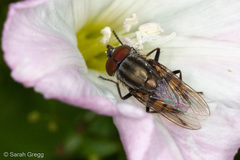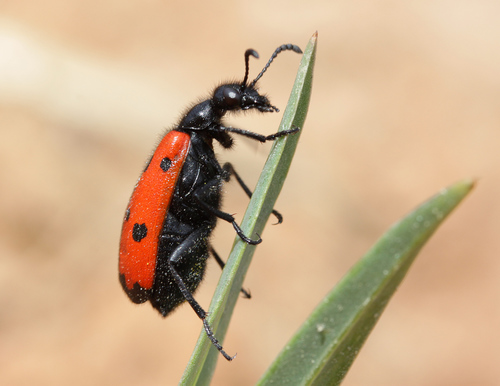i have added different animals that protect fruit trees, thanks to this article talking about a very useful plant to keep around the garden (even if controlled):
https://web.archive.org/web/20150102072301/http://www.plantarteentuoasis.com:80/2013/12/olivarda-mosquera-pulguera-dittrichia-inula-viscosa-usos-propiedades-medicinal-asociacion-cultivos-insecticida.html
This plant attracts many beneficial insects to the garden, giving them protection during the winter so they are ready to attack the fruit fly and the red mites in the spring.
Added: Nesidiocoris tenuis, género Dicyphus, Macrolophus caliginosus, Eupelmus urozonus.
Me gustaría poder resaltar la importancia que los animales y plantas silvestres tienen para nuestra propia alimentación, y promover una agricultura más respetuosa con el medio ambiente.
Por mi zona la gente tiende a matar cualquier cosa que no se pueda comprar en el supermercado, y al hacerlo en realidad perjudica su propio huerto.
Muchos insectos no comen plantas, o quizás un poquito de polen, y a cambio nos ayudan a combatir pulgones o repeler otras plagas, como los Escarabajos de cuatro patas https://www.inaturalist.org/taxa/346032-Mylabris-quadripunctata que además comen huevos y larvas de saltamontes, o las últimamente redimidas mariquitas, que se comen los pulgones cuando adultas y sobre todo cuando larvas.
Además de estas dos especies, inicio el proyecto con otros clásicos amigos del jardinero o jardinera: las lombrices de tierra, que con su digestión vuelven muchos elementos disponibles para las plantas y mejoran la microbiología del suelo, y los clásicos predadores: las mantis religiosas, carnívoras que se alimentan de todo tipo de insectos, los escarabajos de tierra, y algunas familias de pájaros insectívoros.
No dudéis en proponer nuevas especies, y espero que este proyecto sea de utilidad a las personas que se inician en la agricultura sostenible, una acción muy importante para nuestro futuro!







